


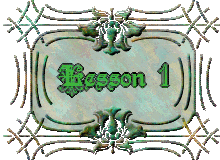

Anatomical Characteristics of the Eye (Description, Bones of the Orbit, Muscles and Nerve Supply, and Solids and Fluids); Anatomical Characteristics of the Eyeball (Description and Composition, Blood and Nerve Supply of the Iris, and Characteristics of the Pupil); Anatomical Characteristics of the Retina; Function of the Optic Disc; Composition of the Ciliary Body, Hyaloid Membrane, Crystalline Lens, Capsule of Tenon, Conjunctiva, and Lachrymal Gland; Description of the Eyelids.

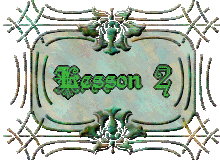

Layers of the Iris (Anterior Surface Endothelium, Anterior Marginal (Border) Layer, Stroma or Vascular Layer, Posterior Marginal Layer, and Posterior Epithelium Layer); Colors of the Iris (Classifications and Characteristics of Iris Colors, Climatic Influences, Dark Eyes (Black, Asian, Hispanic and Native American); The Iris and the Constitution; The Influence of Disease on the Color of the Iris (Color Changes, and Discolorations of the Iris); Iris Density or Texture (Significance, Normal Density, Degrees of Density, and Defective Density).

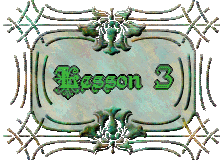

Divisions/Topography of the Iris (Introduction, Significance of Iris Division, Significance of Iris Relief, Radial and Circular Division of the Iris, Major and Minor Zones of the Iris, Sectoral Division of the Iris); American Versus European Iris Diagnosis; The Basic American Iridology Chart; The Basic European Iridiscopy Chart; The European Skeletal Chart, The European Zone System.



Description and Characteristics of Retinopathy (Retina Diagnosis); Origins of Iris Signs; Reflection of Internal Conditions of the Body in the Iris; Significance of Black and White in the Eye; Four Primary Signs of Disease Processes; The Uniform Division and Classification of Disease (The Four Stages of Encumbrance, Characteristics and Signs of Hereditary and Congenital Stages of Disease, Characteristics and Signs of the Acute and Subacute Stage, Chronic Stage, and Destructive Stage); Comparison Between Fermentation and Inflammation in Relation to the Four Stages of Disease; The Theory of the Healing Crisis; Healing Crisis in Action; Revealing the Causes of Disease Via the Iris; Reflex Areas and Remote Systems.

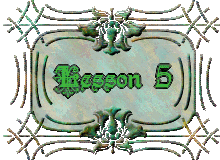

Mechanical Signs; The Gastro-Intestinal System; The Circulatory and Heart Systems; The Respiratory System; The Genito-Urinary System; The Reproductive and Glandular Systems; The Liver, Spleen and Gall-Bladder; The Skeletal or Bony Structure; The Musculature (Muscular Structure); The Brain.

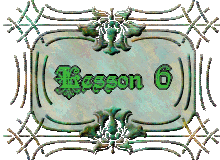

Observation of Changes in the Iris; Histological Explanation of Iris Signs; Interpretation of Specific Iris Signs (Color and Form of Iris Signs, The Rings, Drug Spots, The Lines, The Eight Cornea Signs, The Five Warning Signs, The Ten Pupil Abnormalities, The Thirteen Sclera Vessel Signs, The Eight Depolarization Lines, The Native American Pregnancy Sign, and Pupillary Reactions).

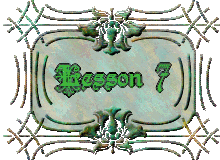

Lacuna or Lesions (Hereditary and Congenital Lesions, Acquired Lesions, and Open or Closed Lesions); Lymphatic Rosary; Nerve Rings and Convergent Lines; Psora or Itch Spots (The Theory of Psora, Scurf Rim and Hereditary Psora, and Types of Psora); The Radii Solaris (Spokes); The Scurf Rim (The Skin, Causes in Children and Adults, Indications and Local Distension, Diagnostic Spots, Specific Hereditary Signs, and How to Efface the Scurf Rim); Sympathetic Wreath (The Autonomic Nervous System in the Iris, and Diagnostic Illustrations); Iris Defects (Acute, Subacute, Chronic and Destructive, and Closed and Hereditary Defects).



Zymnoid or Fifth Spot; Toxic (Poisonous) Deposits Due to Faulty Metabolism or Acidosis; Signs of Inorganic Salts (Minerals) in the Iris (Calcium, Iron, Iodine, Magnesium, Mercury, Phosphorus, Potassium, Sodium and Sulphur); Miscellaneous Chemical or Drug Signs and Discolorations (Vaccines and Serums, Coal Tar Products, Bromides, Opiates and Narcotics, Ergot, Laudanum, Paregoric, Morphine and Cocaine, Strychnine, Turpentine, Glycerin, Quicksilver, Quinine, Salicylic Acid, etc.).



Disease Signs of the Circulatory System (Iris Signs for the Heart, Arteries, Veins, Capillaries and Lymphatics); Disease Signs of the Respiratory System (Iris Signs for the Sinus, Nasal Cavity, Pharynx, Lungs, Bronchi and Diaphragm); Disease Signs of the Gastro-Intestinal System (Iris Signs for the Mouth, Tongue, Tonsils, Liver, Spleen, Gall-Bladder, Stomach, Pancreas, Small Intestine (Duodenum), Large Intestine (Colon), Appendix, Rectum and Anus); Disease Signs of the Genito-Urinary System (Iris Signs for the Kidneys, Bladder, Prostate Gland and Urethra); Disease Signs of the Endocrine Glandular System (Iris Signs for the Pituitary, Adrenals, Thyroid, etc.); Disease Signs of the Skeletal System (Iris Signs for the Spinal Cord, Vertebrae, etc.); Disease Signs of the Sympathetic Nervous System (Iris Signs for the Nerves and Ganglia, etc.); Disease Signs of the Reproductive System (Iris Signs for the Testes, Uterus, etc.); Disease Signs of Miscellaneous Organs (The Pupil, The Ears, The Eyes, The Speech Center, Medulla Oblongata, Abdomen/Peritoneum, Pleura, Thorax, Ribs, Pelvis (Innominate), Thighs, Knees and Feet); Disease Signs of Miscellaneous Ailment-Conditions (Iris Signs for Acidity, Anemia, Apoplexy, Ataxia, Bright's Disease (Nephritis), Catarrh, Chorea, Diabetes, Dizziness, Epilepsy, Fainting, Fatigue, Hysteria, Injuries and Surgical Operations, Inflammations, Sexual Organ Dysfunctions, Tumors, etc.); Disease Signs of Miscellaneous Conditions (Iris Signs for Death, Melancholia, Pregnancy, etc.).

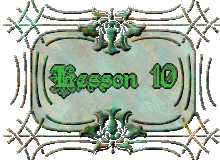

The Examination; Step-By-Step Guide to Reading Your Own Eyes (The Fibers, The Color, The Pupil and its Ruff, The Stomach Ring, Scurf Rim, Exudate Arcs, Drug Spots, Tophi, Lymphatic Rosary, Radii Solaris, Iris Wreath, Lacunae, Nerve Rings, Anemia Ring, Lines, The Eight Cornea Signs, The Five Iris Warning Signs, The Thirteen Sclera Vessel Signs, The Eight Depolarization Lines, The Native American Pregnancy Sign, and Summary); Examination Procedure (Do's and Don'ts, Equipment Required, Method and Style); Techniques in Iris Reading and Summary Analysis; Iris Chart Development (Developing a Chart, Zone Areas, General Field Areas, and Study of Landmarks); Techniques of Iris Diagnosis.
